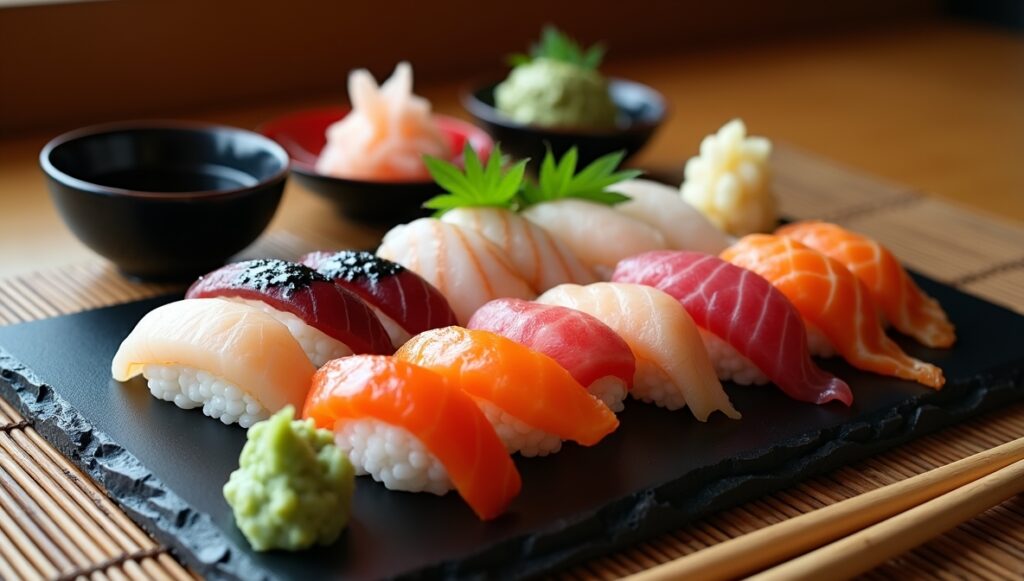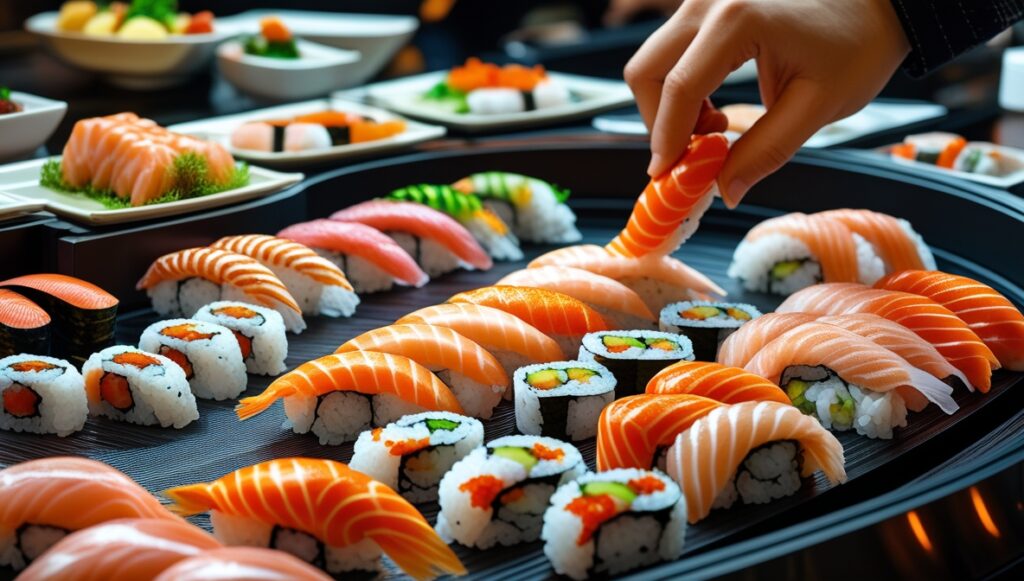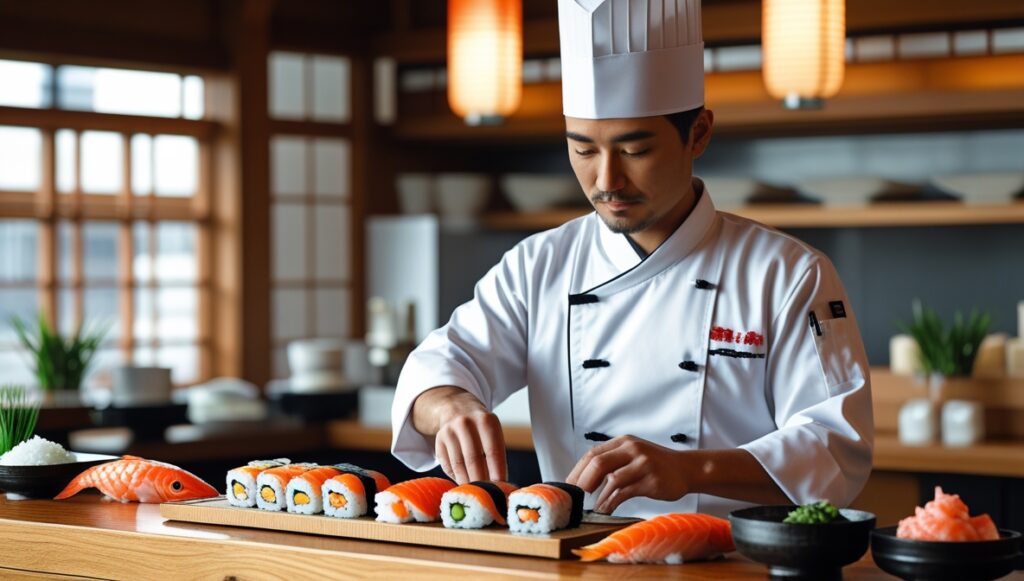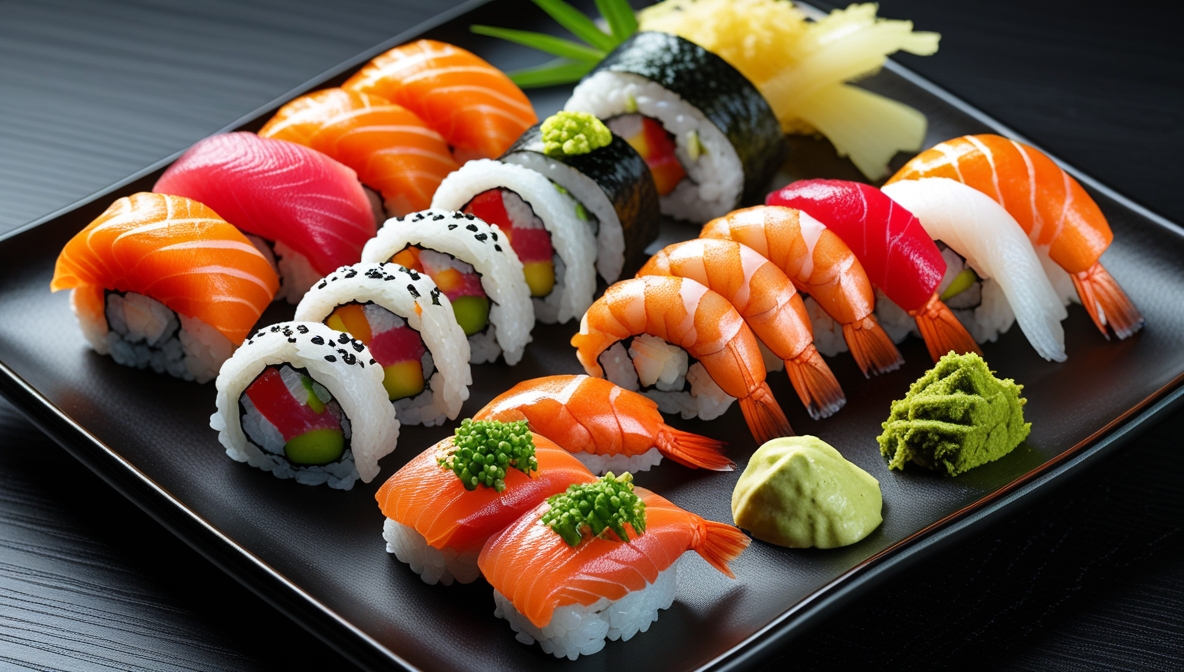Introduction
Among the most famous foods in Japan, sushi stands out as both a culinary symbol and a cultural experience. As a core part of traditional Japan food, it is known for its artistry, clean flavors, and beautiful presentation. From Tokyo’s finest omakase counters to grab-and-go spots, this Japanese dish continues to win hearts around the world.


History & Cultural Significance
Originally developed over 1,000 years ago, sushi began as narezushi, a method to preserve fish in fermented rice. During the Edo period, it evolved into edomae-style—a quicker, fresher approach born in bustling Tokyo.
In Japanese tradition, this dish holds deep cultural roots, often served during festivals, ceremonies, and family events. This Japanese dish chefs, or itamae, dedicate years to mastering the precision and presentation involved.
Key Ingredients & Regional Varieties
Core Ingredients:
-
Vinegared rice
-
Fresh or cooked seafood (tuna, eel, shrimp, salmon)
-
Nori (seaweed)
-
Vegetables (avocado, cucumber)
-
Soy sauce, wasabi, pickled ginger
Regional Styles:
-
Edomae (Tokyo) – Nigiri with fresh, seasonal fish
-
Osaka – Pressed sushi (oshizushi) using wooden molds
-
Hokkaido – Seafood bowls (kaisendon) rich in crab and salmon roe
-
Kyushu – Sweetened rice paired with mackerel
Modern Variations:
-
California rolls
-
Tempura rolls
-
Vegan creations with tofu, beetroot, or pickled vegetables
Cooking Process & Difficulty Level

Skill Level: Moderate, beginner-friendly with guidance
Steps for the Best Sushi Recipe:
-
Cook and season Japanese short-grain rice
-
Prepare fillings (thin slices of seafood or veggies)
-
For rolls: layer rice and fillings on a sheet of nori, roll, and cut
-
For nigiri: shape the rice by hand, top with fish
Tips:
-
Use The Japanese dish-grade fish for safety
-
Wet hands to prevent rice sticking
-
Clean your knife with a damp towel between cuts
Where to Eat Sushi in Japan
Looking for Best Place to try on your trip? Here are the top picks:
-
Sukiyabashi Jiro (Tokyo) – Michelin-starred and world-famous
-
Sushi Saito (Tokyo) – Intimate and elite omakase experience
-
Sushiro – Budget-friendly conveyor belt option
-
Nishiki Market (Kyoto) – Traditional snacks and sushi on-the-go
-
Tsukiji Outer Market (Tokyo) – Legendary for freshness and variety
Drink Pairings & Sides
Drinks:
-
Green tea (ocha) – Traditional and aids digestion
-
Sake – Harmonizes with the flavors
-
Japanese beer (Asahi, Sapporo)
-
White wine – Dry whites like Riesling pair well
Popular Side Dishes:
-
Miso soup
-
Seaweed salad
-
Tempura
-
Edamame
-
Pickled veggies
Interesting Facts
-
The word “sushi” refers to the vinegared rice, not the fish
-
Real wasabi is rare outside Japan—often replaced with horseradish
-
Barack Obama famously dined at Sukiyabashi Jiro
-
Conveyor belt sushi (kaitenzushi) was invented in Osaka in 1958
Health Benefits
This dish isn’t just tasty—it’s healthy too:
-
High in protein and omega-3 fats
-
Low in saturated fat
-
Seaweed adds essential iodine
-
Adaptable to diets: vegan (avocado rolls), keto (sashimi), gluten-free (with tamari)
How to Cook It at Home
Ingredients:
-
2 cups rice
-
3 tbsp rice vinegar
-
2 tbsp sugar
-
1 tsp salt
-
Sushi-grade tuna/salmon
-
Nori sheets
-
Cucumber, avocado
Instructions:
-
Rinse and cook the rice. Add vinegar, sugar, salt.
-
Lay nori on bamboo mat, spread rice evenly.
-
Add fillings and roll tightly.
-
Cut with a damp knife and serve.
Home Tips:
-
Chill your knife before slicing
-
Keep rice at room temperature for rolling
Global Fusion & Adaptations
The influence of this traditional Japan cuisine is worldwide:
-
California Roll (USA)
-
Sushi Burrito (U.S.)
-
Sushi Pizza (Canada)
-
Kimchi Rolls (Korea)
-
Vegan options using quinoa, tofu, or beetroot
Comparison with Similar Dishes
vs Ceviche (Peru)
-
The Japanese dish: Uses vinegared rice with raw fish or vegetables.
-
Ceviche: Raw fish marinated in citrus juices (like lime).
-
Difference:
-
The Japanese dish is mild, clean-flavored; ceviche is tangy and spicy.
-
Ceviche is served cold and without rice.
-
The Japanese dish is often eaten with soy sauce and wasabi; ceviche with chili and corn.
-
vs Sashimi (Japan)
-
The Japanese dish: Includes vinegared rice.
-
Sashimi: Just thin slices of raw fish, no rice.
-
Difference:
-
The Japanese dish is a complete dish; sashimi is usually served as an appetizer.
-
Sashimi focuses purely on fish texture and freshness.
-
The Japanese dish combines fish with balance in rice, seaweed, and garnish.
-
vs Poke Bowl (Hawaii)
-
The Japanese dish: Structured, neatly rolled or pressed.
-
Poke Bowl: Cubed raw fish over rice with toppings (avocado, sesame, sauce).
-
Difference:
-
Poke is mixed and casual; sushi is elegant and minimal.
-
The Japanese dish uses vinegared rice; poke uses plain rice.
-
Poke is influenced by Hawaiian and Japanese flavors.
-
vs Chirashi (Japan)
-
The Japanese dish: Comes in rolls, nigiri, or hand-formed shapes.
-
Chirashi: “Scattered sushi” — raw fish and toppings over a bed of sushi rice.
-
Difference:
-
Chirashi is a bowl version of sushi, no rolling needed.
-
Easier and faster to prepare than sushi rolls.
-
Ideal for casual meals or large servings.
-
vs Kimbap (Korea)
-
The Japanese dish: Often includes raw seafood, less seasoning in rice.
-
Kimbap: Rolled with cooked meat, vegetables, and sesame-flavored rice.
-
Difference:
-
Kimbap rice is seasoned with sesame oil, not vinegar.
-
No raw fish in kimbap — usually uses ham, egg, or bulgogi.
-
Kimbap is more like a Korean picnic snack.
-

